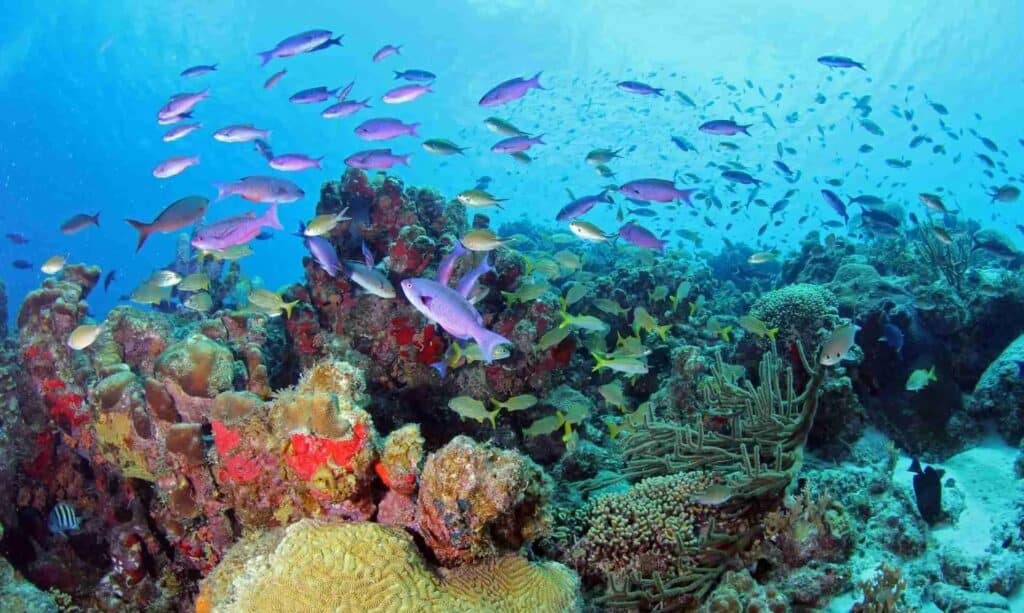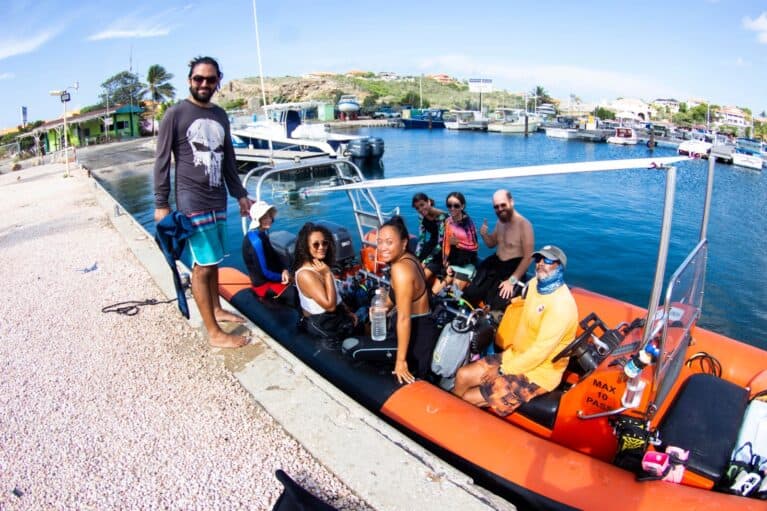
What language do locals speak in Curaçao?
What language do locals speak in Curaçao?
Are you wondering what language the friendly locals will greet you with when you visit this vibrant Caribbean island?
Understanding the island’s unique linguistic heritage
The primary language spoken by locals in Curaçao is Papiamentu, a creole language that beautifully blends Portuguese, Spanish, Dutch, and influences from West Africa and Native American tongues. You will hear phrases like “bon dia” for good morning and “danki” for thank you throughout your visit. This fascinating linguistic mix reflects the island’s rich history as a Dutch Caribbean territory with connections to Cape Verde, Latin America, and the wider Caribbean region. Similar creole languages exist in neighboring islands like Curaçao Bonaire and Sint Maarten, though each has distinct characteristics.
While Papiamentu dominates daily conversations, Dutch remains the official language for government and education, and nearly everyone speaks English fluently, especially in tourist areas. You will find that most Curaçaoans are impressively multilingual, often switching effortlessly between Papiamentu, Dutch, English, and Spanish. This linguistic diversity makes navigating the island easy for visitors, whether you are booking activities through CuracaoTodo, dining at local restaurants, or exploring historic neighborhoods like Punda and Otrobanda. The welcoming nature of locals combined with their language skills ensures you will feel comfortable communicating throughout your stay.

Luxury car rentals in Curaçao
Experience transparent pricing and exceptional service with Rent Car Curaçao. Choose from luxury vehicles elevate your Curaçao adventure.
Diving deeper into Papiamentu and multilingual daily life
Understanding the nuances of how language shapes everyday interactions on the island will enrich your cultural experience and help you connect more authentically with locals during your stay.
Common phrases you will hear throughout the island
As you explore markets, beaches, and restaurants, you will frequently hear expressions like pasa un bon dia (have a good day), manda bo ruman (send your sibling), and ku Tony in casual conversations between friends. Locals often use manda palabra (send word) when asking someone to pass along a message, and you might hear the affectionate phrase bida di mi kurason (life of my heart) used between loved ones. These expressions showcase how Papiamentu blends Portuguese and Spanish roots with uniquely Caribbean sentiment, creating a warm and expressive communication style that reflects the island’s welcoming culture.
Historical linguistic influences from Portuguese-speaking regions
The connection between Papiamentu and Cape Verdean Creole is particularly fascinating for language enthusiasts. Both languages share roots in Upper Guinea Portuguese due to historical trading routes between Upper Guinea, the Caribbean, and Cape Verde islands off West Africa. Linguistic researchers have documented similarities with Guinea-Bissau Creole, another Portuguese-based creole, though each developed distinct characteristics based on local influences. This connection explains why many Cape Verdean visitors to Curaçao find Papiamentu surprisingly familiar, recognizing vocabulary and grammatical structures that echo their own creole heritage.
Literary contributions and academic recognition
Papiamentu has gained scholarly attention through publications like the Journal of Caribbean Literatures, which features linguistic studies and creative works in the language. Notable researchers including Pieter Specht and B.G. Quant have documented the evolution of Papiamentu through their academic work. You will find references to expressions like Pieter Specht pa in linguistic literature examining how the language functions in everyday contexts. The phrase B.G. Quant ta appears in grammatical analyses showing how Papiamentu constructs sentences differently from European languages. Scholar John H. has also contributed to understanding how the language maintains vitality across generations despite Dutch colonial influence.
Language patterns across the ABC islands
While exploring nearby destinations, you will notice that Curaçao Bonaire and Aruba share Papiamentu as their primary creole language, though pronunciation and vocabulary vary slightly between islands. In contrast, Sint Maarten uses English-based creole due to different colonial histories. The expression & nan (and them) appears frequently in Curaçao’s version of Papiamentu when referring to groups, while the contraction manda gabla (send talk) represents how the language continues evolving with modern communication needs. These regional variations make each island’s linguistic landscape unique while maintaining mutual intelligibility among ABC island residents.
Practical language tips for visitors
You do not need to speak Papiamentu fluently to enjoy your visit, but learning a few basic phrases will earn you genuine smiles from locals. When booking activities through CuracaoTodo or dining at local establishments, starting with a simple “bon dia” or “bon tardi” (good afternoon) shows cultural respect. Most tour operators, restaurant staff, and activity providers communicate seamlessly in English, making it easy to arrange everything from snorkeling trips to Christoffel National Park hikes without language barriers. The multilingual environment means you can comfortably explore all the island’s offerings while gradually picking up Papiamentu phrases that enhance your authentic Caribbean experience.
What language do locals speak in Curaçao? - FAQ
How is Papiamentu related to other Portuguese-based creoles?
Papiamentu shares significant linguistic connections with Cape Verdean Creole and Guinea-Bissau Creole, all descended from Upper Guinea Portuguese trading language. Historical maritime routes between West Africa, Cape Verde, and the Caribbean created these parallel developments. Researchers studying Upper Guinea linguistic patterns find remarkable similarities in vocabulary and grammar structures, though each creole evolved distinctly based on local African, European, and Native American influences. This connection explains why Cape Verdean visitors often recognize familiar words and sentence patterns when hearing Papiamentu spoken throughout the island.
What academic resources document Papiamentu language development?
The Journal of Caribbean Literatures publishes extensive linguistic research on Papiamentu’s evolution and contemporary usage. Scholars like Pieter Specht and B.G. Quant have contributed detailed grammatical analyses documenting how the language functions in everyday contexts. John H. and other researchers examine how Papiamentu maintains vitality across generations despite Dutch colonial influence. These academic publications provide valuable insights into the language’s Portuguese, Spanish, Dutch, and West African roots, making them essential resources for linguists and cultural enthusiasts interested in Caribbean creole languages and their unique development patterns.
What does the phrase "pasa un bon dia" mean in Papiamentu?
The expression pasa un bon dia translates to “have a good day” and represents one of the most common farewells you’ll hear throughout Curaçao. This phrase beautifully demonstrates Papiamentu’s Portuguese-Spanish blend, with “pasa” (pass/have) and “bon dia” (good day) creating warm, expressive communication. You’ll encounter this greeting in markets, shops, restaurants, and beaches as locals wish visitors well. Learning this simple phrase along with “danki” (thank you) and “bon tardi” (good afternoon) will earn genuine smiles from residents and enhance your cultural experience while exploring the island’s diverse attractions.
How do locals use "manda palabra" in everyday conversation?
The phrase manda palabra literally means “send word” and functions as a common request to pass along messages or greetings in Curaçao’s close-knit community. You might hear someone say “manda bo ruman” (send your sibling) when asking another person to relay information to family members. The expression manda gabla (send talk) represents modern evolution of this communication pattern. These phrases showcase how Papiamentu maintains strong oral tradition values where personal message delivery remains culturally significant. Understanding these expressions provides insight into the island’s warm, community-focused social dynamics.
What does "bida di mi kurason" express in Papiamentu culture?
The affectionate phrase bida di mi kurason translates to “life of my heart” and represents deep emotional expression common in Papiamentu. Locals use this endearment between romantic partners, family members, and very close friends to convey profound love and connection. This expression exemplifies how Papiamentu blends Portuguese vocabulary (“vida” becoming “bida”) with uniquely Caribbean sentiment, creating communication that’s more emotionally expressive than Dutch or English. You’ll hear similar warm phrases throughout your visit, reflecting the island’s culture of open affection and strong family bonds that characterize daily life in Curaçao.
Who is Pieter Specht and what is his contribution to Papiamentu studies?
Researcher Pieter Specht has made significant contributions documenting Papiamentu’s grammatical structures and everyday usage patterns. References to Pieter Specht pa appear in linguistic literature examining how the language constructs sentences differently from European languages. His work, alongside scholars like B.G. Quant, has helped establish Papiamentu as a legitimate academic subject worthy of serious study. These researchers have documented the language’s evolution from trading pidgin to fully developed creole, examining influences from Portuguese, Spanish, Dutch, West African languages, and Native American tongues that created this unique Caribbean linguistic treasure.
What does the expression "& nan" mean in Curaçao's Papiamentu?
The contraction & nan translates to “and them” and appears frequently in Curaçao’s version of Papiamentu when referring to groups of people. For example, saying “Maria & nan” means “Maria and her group/family.” This linguistic shorthand reflects the language’s efficiency and community-focused nature, where group identity often matters as much as individual identity. You’ll notice this expression used throughout casual conversations, in written communication, and even on signs around the island. Understanding these small linguistic patterns helps visitors appreciate how Papiamentu reflects Caribbean cultural values of collective identity and family connection.
How does B.G. Quant's research help understand Papiamentu grammar?
Scholar B.G. Quant has extensively documented how Papiamentu grammar differs from European language structures. The phrase B.G. Quant ta appears in academic analyses showing unique verb conjugation and sentence construction patterns. His research examines how the auxiliary verb “ta” functions to indicate present continuous tense, a feature borrowed from Portuguese and Spanish influences. This grammatical work helps linguists understand how creole languages develop distinct rules despite originating from multiple source languages. For visitors interested in language learning, these academic insights reveal why Papiamentu feels both familiar and uniquely different from its European parent languages.
What role does "ku Tony" play in understanding Papiamentu expressions?
The phrase ku Tony (with Tony) demonstrates how Papiamentu uses the preposition “ku” (with/and) in everyday conversation construction. This linguistic pattern appears throughout casual speech when locals discuss activities, relationships, or plans involving other people. Understanding how “ku” functions helps visitors recognize sentence structures they’ll hear constantly during their stay. Combined with expressions like manda palabra and pasa un, these common patterns reveal how Papiamentu creates meaning through Portuguese-Spanish vocabulary blended with uniquely Caribbean grammatical rules. Learning these basic structural patterns enhances communication and cultural appreciation throughout your Curaçao experience.
Are there language learning resources available for tourists interested in Papiamentu?
While most tourist interactions happen in English, learning basic Papiamentu enriches your cultural experience significantly. Several local bookstores in Punda and Otrobanda sell phrase books and dictionaries. The Kura Hulanda Museum offers cultural context about language development alongside historical exhibits. Online resources include academic articles from the Journal of Caribbean Literatures and language learning apps with basic Papiamentu phrases. Many tour operators and activity providers booked through CuracaoTodo gladly teach visitors common expressions during excursions, making language learning a fun, integrated part of your adventure rather than formal study.
Discover the Wonders
of Klein Curaçao
Experience the untouched beauty of Klein Curaçao, a hidden paradise with stunning beaches and rich marine life. Perfect for snorkeling, diving, or simply relaxing in the sun.
Popular subjects
Luxury car rentals in Curaçao
Experience transparent pricing and exceptional service with Rent Car Curaçao. Choose from luxury vehicles elevate your Curaçao adventure.
Subscribe to our newletter
Discover the Wonders of Klein Curaçao
Experience the untouched beauty of Klein Curaçao, a hidden paradise with stunning beaches and rich marine life. Perfect for snorkeling, diving, or simply relaxing in the sun.




